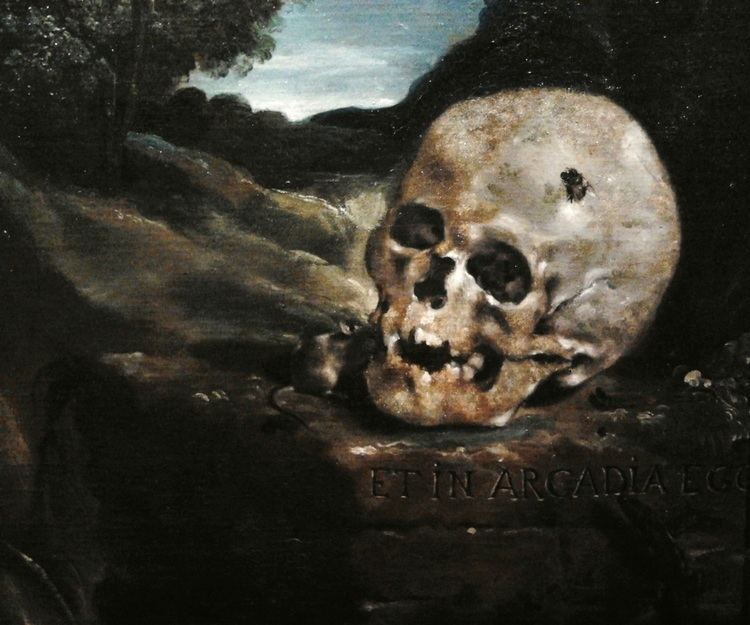Year 1618–1622 Artist Guercino Created 1618–1622 Support Canvas | Medium Oil on canvas Dimensions 81 cm x 91 cm Media Oil paint | |
 | ||
Similar Artwork at Galleria Nazionale d'Arte Antica, Oil paintings | ||
Et in arcadia ego
Et in Arcadia ego (also known as The Arcadian Shepherds) is a painting by the Italian Baroque artist Giovanni Francesco Barbieri (Guercino), from c. 1618–1622. It is now on display in the Galleria Nazionale d'Arte Antica of Rome.
Contents
The painting shows two young shepherds staring at a skull, with a mouse and a blowfly, placed onto a cippus with the words Et in Arcadia ego ("I too [was] in Arcadia"). The latter is a moral reference to Death. The phrase appears for the first time in art and architecture in this work. The iconography of the memento mori theme symbolised in art by the skull was rather popular in Rome and Venice since Renaissance times.
Elias L. Rivers suggested the phrase "Et In Arcadia Ego" is derived from a line from Daphnis' funeral in Virgil's Fifth Eclogue Daphnis ego in silvis ("Daphnis was I amid the woods"), and that it referred to the dead shepherd within the tomb, rather than Death itself.
Mentioned for the first time in the collection of Antonio Barberini in 1644, the painting was later acquired by Colonna of Sciarra (1812), being attributed to Bartolomeo Schedoni until 1911. Nicolas Poussin also made two paintings on the topic of Et in Arcadia Ego, less than two decades later.
The painting is connected with Guercino's Flaying of Marsyas by Apollo in Palazzo Pitti (1618), where the same group of shepherds is present.
Nicolas poussin et in arcadia ego
In Literature
Goethe's Italian Journey (1816) has "Et In Arcadia Ego" as its motto. Goethe viewed Guercino's painting in Cento (17 October 1786).
Judge Holden, in Blood Meridian: or The Evening Redness in the West, bears the phrase 'Et in Arcadia Ego' on his rifle.
Tom Stoppard's play Arcadia (1992) references the motto 'Et in Arcadia ego' in its title and also Guercino's painting over the course of the play in relation to the landscape of Sidley Park.
Evelyn Waugh's Brideshead Revisited (1945) Book One, "Et in Arcadia Ego" first of three books.
